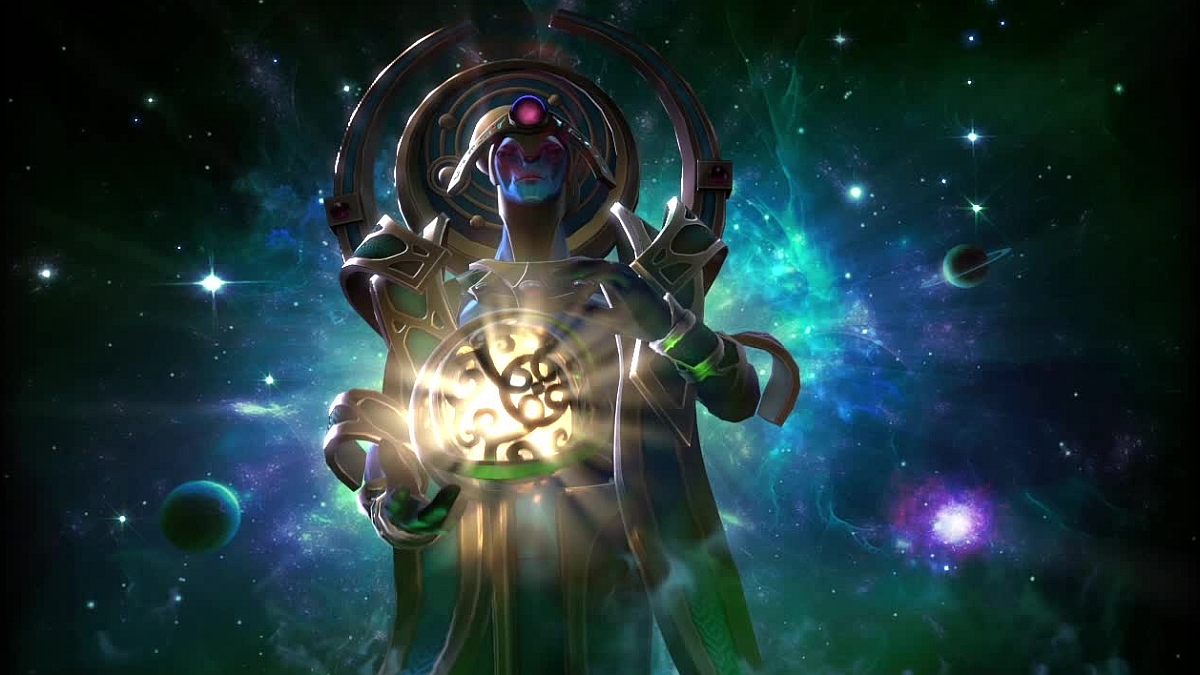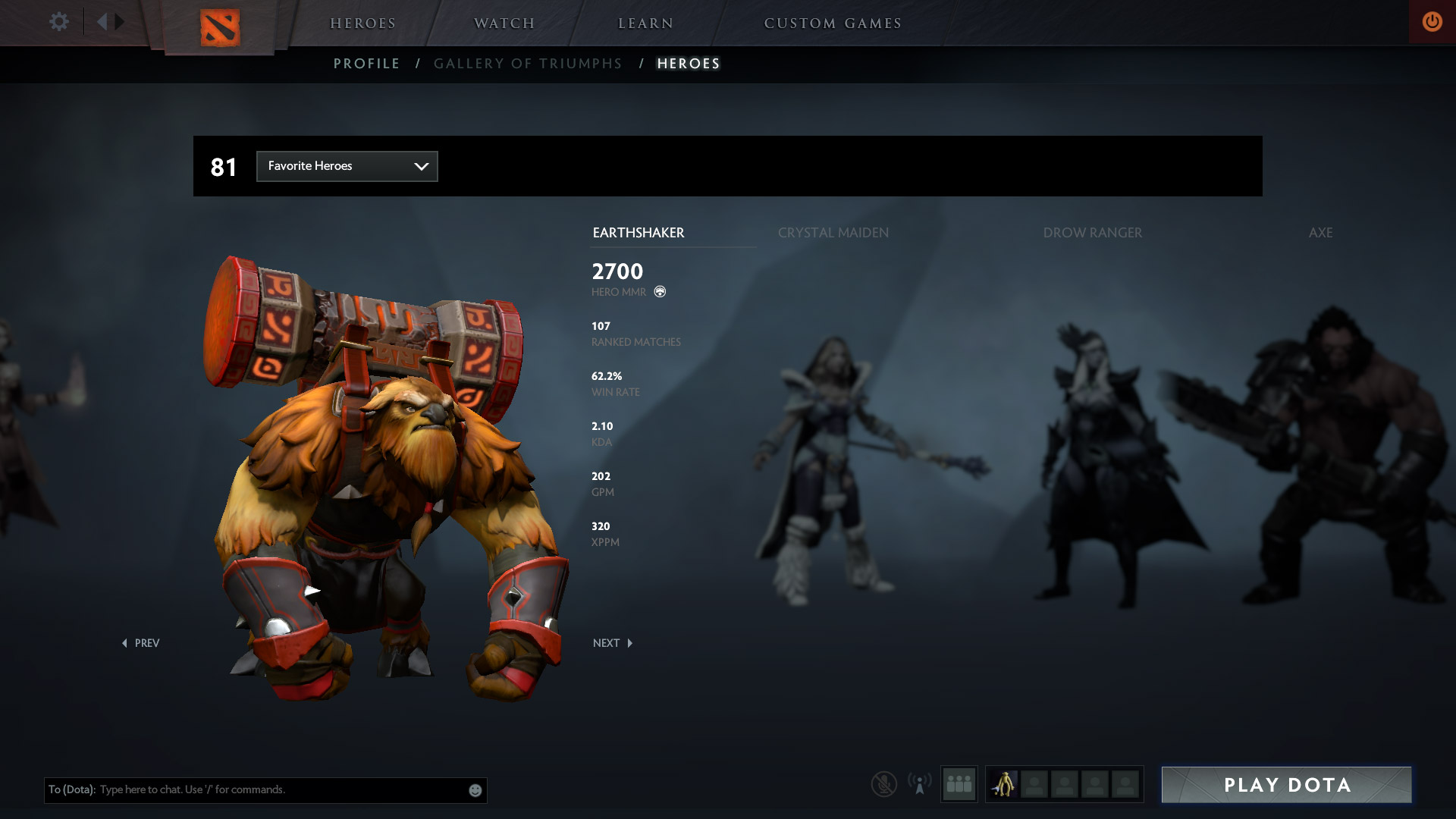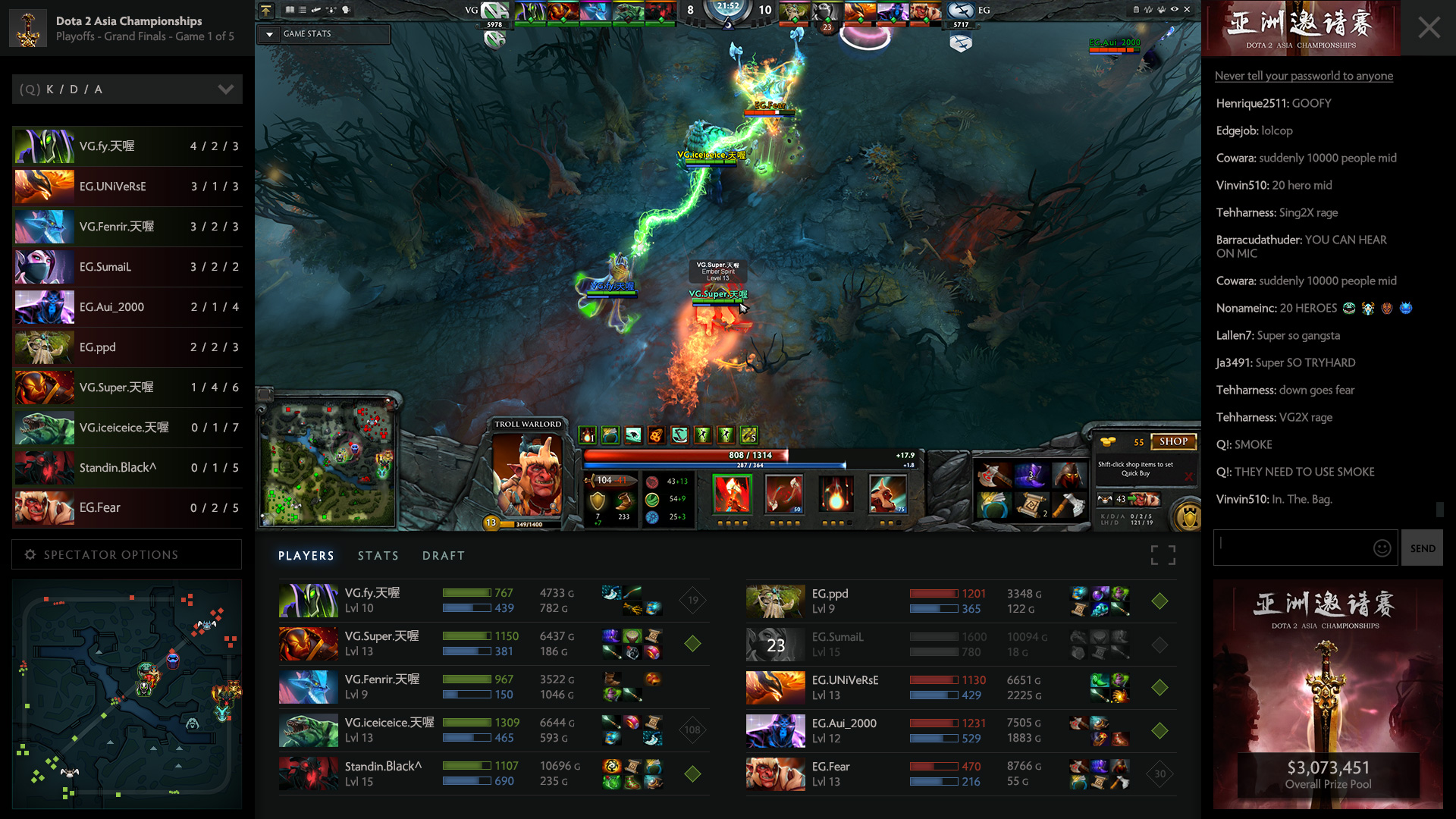Valve on Dota 2 Reborn, community, and building a game for the long term

Erik worked as a QA tester for Sierra on the original Half-Life, and subsequently joined Valve to work as a shipping manager. According to his official bio, he's now one of the company's 'business development authorities'. That's not a job title, mind.
Earlier this month, during the International, I had a chance to sit down with Valve’s Erik Johnson for half an hour to discuss Dota 2’s past, present, and future. In particular, I was keen to talk to Erik about Valve’s approach to the community—the way it chooses to talk to, and not to talk to, the increasingly large group of people who make Dota 2 their hobby. I can’t promise too many hot scoops from what follows—this is Valve we’re talking about—but it should be of interest if you’re curious about how Valve operate as a game developer and service provider. This is the philosophy that produces the stuff you love about Dota as well as the stuff that makes you angry. The two are not, it turns out, entirely separable.
PC Gamer: With regards to Reborn, how has the beta been going? When you rolled it out, the plan for launch was ‘post-TI’. Have there been any surprises? Has it progressed slower or faster than you expected, in terms of issues rolling in?
Erik Johnson: Not really. There’s a bunch of cool custom games getting built which we kind of expected. We’re happy with overall performance of the engine across a variety of hardware. Dota runs faster on higher-end machines, which is what you’d hope would happen if you made a big technology investment, so yeah—we’re happy with how things are moving.
PCG: Is there an ETA, for Reborn?
EJ: No ETA, but sooner rather than later. Once this tournament’s over, that’s the thing we’re pushing hardest.
PCG: I thought it was interesting watching, from Manifold Paradox to New Bloom, how your approach to designing live events for the community changed [you can read more detailed thoughts about said events here, for what it's worth. - Ed] Manifold Paradox was controversial for being the first event that brought new mechanics inside the regular Dota game. New Bloom moved away from that. Was that a case of trying it and finding that it didn’t work?
"We still feel that, fundamentally, our strongest form of communication is software."
EJ: Everything that we do like that, we’re just poking at something specific to see how it works. We’re not technically running a science experiment, but we have ideas—like ‘what if there was an additional level alongside the things that are going on in everybody’s day to day Dota matches’. How do we fit that into the experience? How do we build new content around an event that exists for everyone, rather than being something separate? That was the impetus behind that. I believe it tied into Oracle—we like building stories and depth into those heroes and making that all make sense for people.
The biggest gaming news, reviews and hardware deals
Keep up to date with the most important stories and the best deals, as picked by the PC Gamer team.
We got a bunch of good data from it and then we did a more traditional event around the Lunar New Year. But so much of our focus has been on getting Reborn up and running and that was something that we were doing without talking. It wasn’t very out in the open for a long time. We weren’t making huge investments publically in events as we have in years past because we were pretty invested in Source 2.
PCG: I remember a post written in the aftermath of the Diretide that didn’t happen, that said ‘this is how we’re going to change how we communicate’. There seems to be a little bit of tension in the way Valve communicates between that openness and the desire for those big reveal moments. There are times when it’s a case of ‘silence, silence, silence, silence, then suddenly something new.’ Does that all-or-nothing difference need to be smoothed out a little?
EJ: We still feel that, fundamentally, our strongest form of communication is software. You can discern everything we’ve done and everything we’re thinking by reading through an update. We think that there’s some amount of value in just surprising the community with something you didn’t think was coming and we wouldn’t want to lose that. But we hear when people are saying that we do a poor job at communication and some of it’s an artifact of the type of company that we are. I think sometimes it turns to what I feel is a place that’s not super accurate, like ‘Valve doesn’t care’. We care a huge amount about our users and our community.

PCG: There’s an orthodoxy for community management among people who run online games. Valve is really different. There’s no video person who’s in front of people every day.
EJ: Exactly. I guess we just take a different approach. Instead of a community manager, the person that you’re going to hear from at Valve is somebody who is working on the game every day. There’s a currency of time that we’re all investing into our products, and we could either be getting what looks like community management or we could be working on the next hero and it really is that kind of tradeoff.
In our heads we’re constantly saying, fundamentally, ‘what do I think I could add the most value to?’ But the question really is, ‘what does the community want me to work on today?’ If we told everybody what we were doing, would they say ‘oh, that’s the right thing to work on’? That’s how we’re testing the decisions we’re making. When an artist’s saying 'I could make a blog post about what happened last week, or I could start sketching out what Pit Lord’s going to look like' they say 'I think people just want me to make Pit Lord.'
PCG: There’s a certain degree of trust on both sides there, right? You’re trusting that you know what the community will respond best to, but you’re also asking the community to trust that that’s what you’re doing. They don’t have that information. There’s no sense of even how big the Dota team is or what day-to-day looks like. That’s the flipside. Do you think that you need to let people in a little bit more, or simply refresh that trust from time to time?
EJ: It comes up often enough that certainly it’s something that we need to look at.
"We certainly don’t want to come in and enforce our set of rules."
PCG: Something that seems to have not come up for a while is player behaviour. There was a bunch of different approaches to the report system and—must be more than a year ago now—some data about how it affected things. Is that something to return to post-Reborn? Because that’s one of Dota’s problems, as a piece of software—people. Is that something that should get more attention?
EJ: It’s not something that currently bubbles up super high, at least in terms of what we see in terms of feedback. But there are people at Valve who look at that problem almost continuously.
PCG: For the platform as a whole? For Steam?
EJ: For Dota also. Matchmaking and behaviour in Dota have a pretty strong relationship. So the same people look at those problems all of the time.
PCG: We talked about community management in terms of PR, but it also concerns how the community talk to each other, the language they use—is that something you feel that you can wade into? It seems a point of tension with the notion that the community is always right. Sometimes they are calling each other names.
EJ: I think the community’s reasonably good at policing itself when it comes to the type of language they use. We certainly don’t want to come in and enforce our set of rules. If the community rallies around a certain set of things that they want to make happen then we’re happy to write the code that makes that come true. We have access to a bunch of data that’s useful for us in terms of measuring how those things are being done inside of the game, so maybe our view on it is a little bit... we think more accurate.
Surely people get angry and say bad words when they play games of Dota, especially when they lose, but as a whole, if you walk around this event…
PCG: ...people are nice in real life.
EJ: We fundamentally love our customers and our community. We’re not really willing to go to the place where we feel that we need to make a bunch of decisions about the content they create for each other.

PCG: Related is the newcomer experience. It’s something that you’ve experimented with two years running at this event and in terms of the game itself. Dota’s other big problem is its accessibility. How has your approach to that changed? You did the first spate of tutorials a year and a bit ago. You’re doing new ones for Reborn. What was the thinking behind that?
EJ: It was a little bit of ‘hey, let’s go back and revisit this and tinker with it’. Dota has a lot of users so its accessibility actually seems pretty great. People tend to play the game and keep playing it for a really long time. I think, fundamentally, people come into Dota 2 the same way they did with DotA 1—one of their friends is playing Dota and they want to play games together, and that’s how they get into the game. But, especially around the International, we cast the net pretty wide because there could be a bunch of people who want to try it out and see if it’s the thing for them. The training maps, that’s their goal.
Same as the new player stream that happens with the event. The audience for that might be a bunch of people that just want to show, say, their parents. Clearly there’s no strong business motive for Valve to get a bunch of parents to watch Dota when they’re probably never going to play it, but there is a bunch of value in a bunch of fans feeling good about the product that they care so much about. Does that make sense?
PCG: That’s an interesting angle. Speaking to you before, and speaking to others from Valve, I understand that you serve the audience that you have. But what if you want somebody else to join that audience, somebody who doesn’t already have a channel into it?
EJ: As with any problem, you want to make it the simplest possible problem. Valve want people to play Dota. They’re only going to do that if they’re having fun. If they’re not having fun they’re going to go and do something else because entertainment time is hard to come by. We don’t make our world super complicated—‘what region should we go into where we think a certain percentage of users would be playing Dota?’ ‘What’s the demographic of our users?’ We’re like, ‘how do we make a bunch of people happy’. That’s really all we’re trying to do. With this event, it’s ‘how do we make the people who come here super happy’. When people are playing Dota or using Steam or playing Counter-Strike: how can we make our existing customers super happy so they tell their friends, ‘hey I’m super happy come play this game with me’.
"There’s this pull towards a bunch of short-term good, long-term awful decisions."
PCG: Does that allow you to take a longer view? I was wondering if you’d seen a lack of growth because of the lack of landmark updates during the time that Reborn has been in development. The rate of new hero additions has dropped off dramatically over the last couple of years, from 13 in 2013 to three last year, one so far this year. In other games those things are done specifically because it gets the game back out in front of people again. Do you feel the need to compete in that way?
EJ: We’re still growing pretty well in terms of users. We were at eight and a half million users this time last year and we’re at eleven and a half million this year. Again, like, it’s data that tells us that we’re pushing things forward but we’re not driving at some magic number and we’re not driving towards growth. I feel like—let’s just keep making people happy and keeping them entertained, because that’s a hard enough problem—to convince someone to spend some of their very limited entertainment time on a thing we built.
You asked if this is the long play on things? I hope so, because everything we do at Valve, that’s how we try to approach it. We’ve always felt like there’s this pull towards a bunch of short-term good, long-term awful decisions that are just sitting there waiting for people take all the time. We’re sad when we see other companies do that. As long as Valve’s been around, our decision has been to just do the long-term thing. That’s the company we want to come in to work at every day. Not some silly short-term decision being made.
PCG: Finally, Pit Lord. Question mark?
EJ: It’d be awesome if Pit Lord was in the game. I don’t actually know, though.
PCG: Fair enough. Valve things.
EJ: Looking forward to those five-man teleports, though.
Still hungry for Dota 2 hot takes? Check out Three Lane Highway.
Joining in 2011, Chris made his start with PC Gamer turning beautiful trees into magazines, first as a writer and later as deputy editor. Once PCG's reluctant MMO champion , his discovery of Dota 2 in 2012 led him to much darker, stranger places. In 2015, Chris became the editor of PC Gamer Pro, overseeing our online coverage of competitive gaming and esports. He left in 2017, and can be now found making games and recording the Crate & Crowbar podcast.


